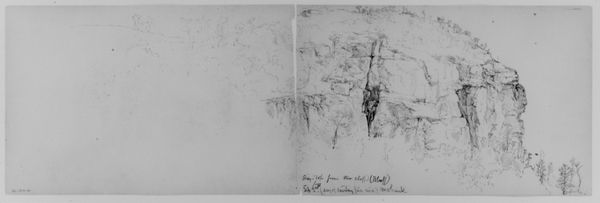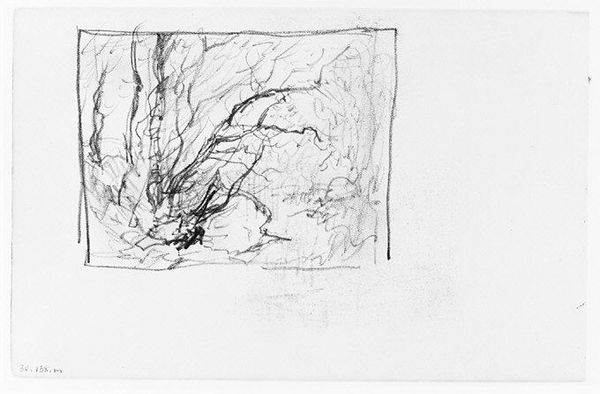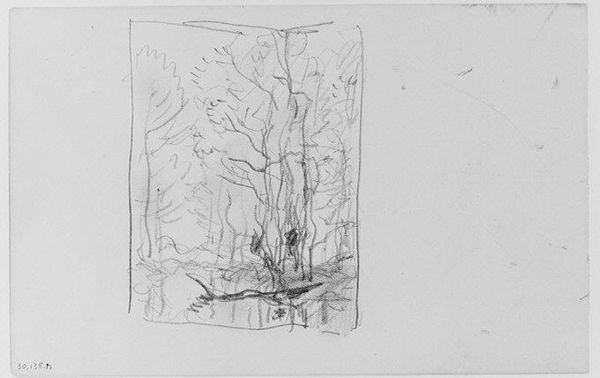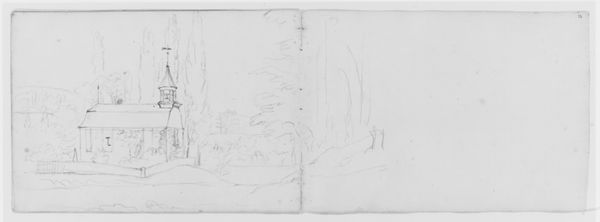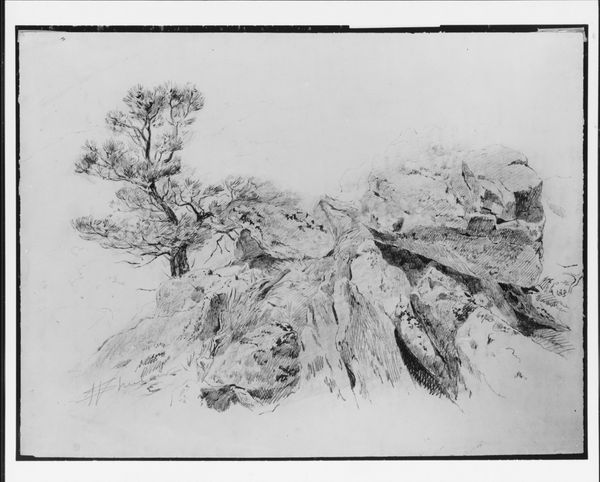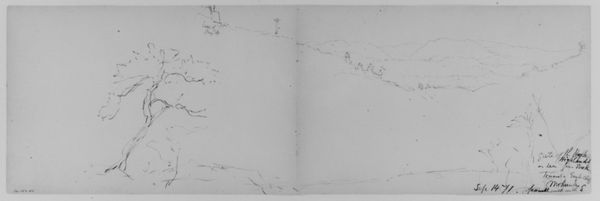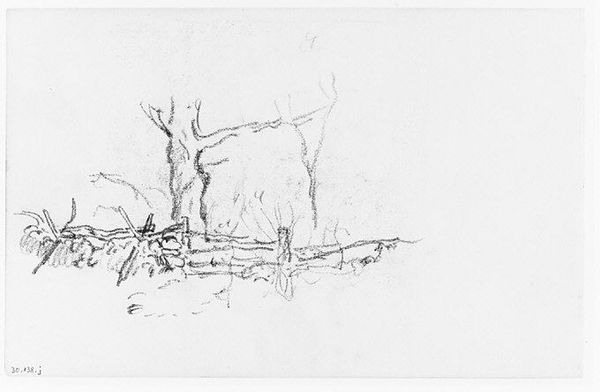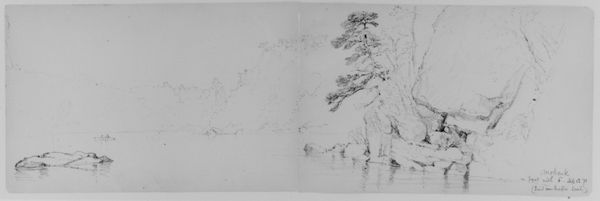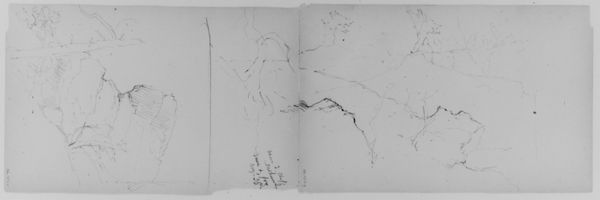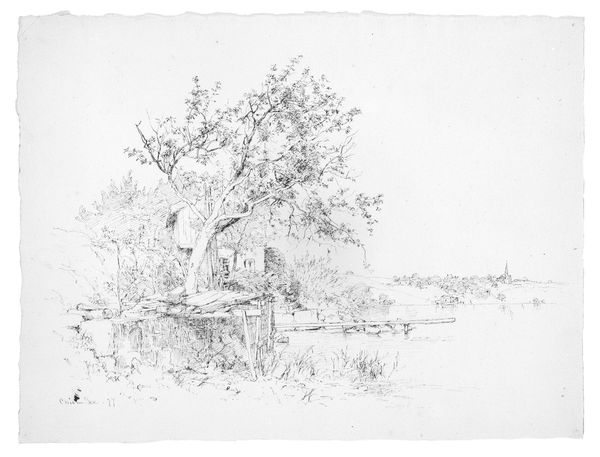
#
tree
#
light pencil work
#
ink painting
#
pencil sketch
#
incomplete sketchy
#
hand drawn type
#
organic drawing style
#
ink drawing experimentation
#
hand drawn
#
pen-ink sketch
#
sketchbook art
Dimensions: 5 1/2 x 8 3/4 in. (14 x 22.2 cm)
Copyright: Public Domain
Curator: Here we have Daniel Huntington's "Mohonk, 1871 (from Sketchbook)," a pencil and ink drawing created around 1870. Editor: The unfinished quality is really striking; it has a certain vulnerability. One side has the barest hint of landscape, like a ghost, and the other side with the craggy tree… the starkness of the black ink pulls me in. Curator: It’s interesting to consider Huntington, primarily known for his portraiture and history paintings, in this intimate sketchbook setting. One can feel how American landscape painting took off and the relationship to Manifest Destiny with his interest in nature, specifically a place in upstate New York. What identity does this natural space conjure? Editor: The raw materiality speaks volumes about process, I think. The way he works the ink, almost scrapes it across the page...the rapid application. You can feel him trying to capture something elusive about this place—the texture of the rock, the twist of the branches. How does the specific locality influence this study of nature? What would an indigenous analysis tell us? Curator: Absolutely. Huntington came from a wealthy background; this leisure time to contemplate nature was possible because of a system that dispossessed indigenous people and created an exploitative upper class. To truly understand this sketchbook page, we must unpack the social structures that allowed its creation. What choices of materials are at work here? Is that simply because it's convenient for an outdoor study, or is it intentional? Editor: Perhaps convenience played a role but I can't help to wonder how the easy access of the page could reflect a deeper meditation for labor and a contrast to how that accessibility doesn't necessarily apply to indigenous experience. By engaging in something that’s available he finds himself on his own journey, what a deep comparison to unpack! Curator: Yes. It also allows us to consider it in light of contemporaneous writings on landscape and power, questioning the mythologies perpetuated in artistic practice during that era. We can interpret landscape art using class. Editor: That is all very poignant and it feels like a needed recontextualizing of the artwork. I will keep these points in mind moving forward!
Comments
No comments
Be the first to comment and join the conversation on the ultimate creative platform.
